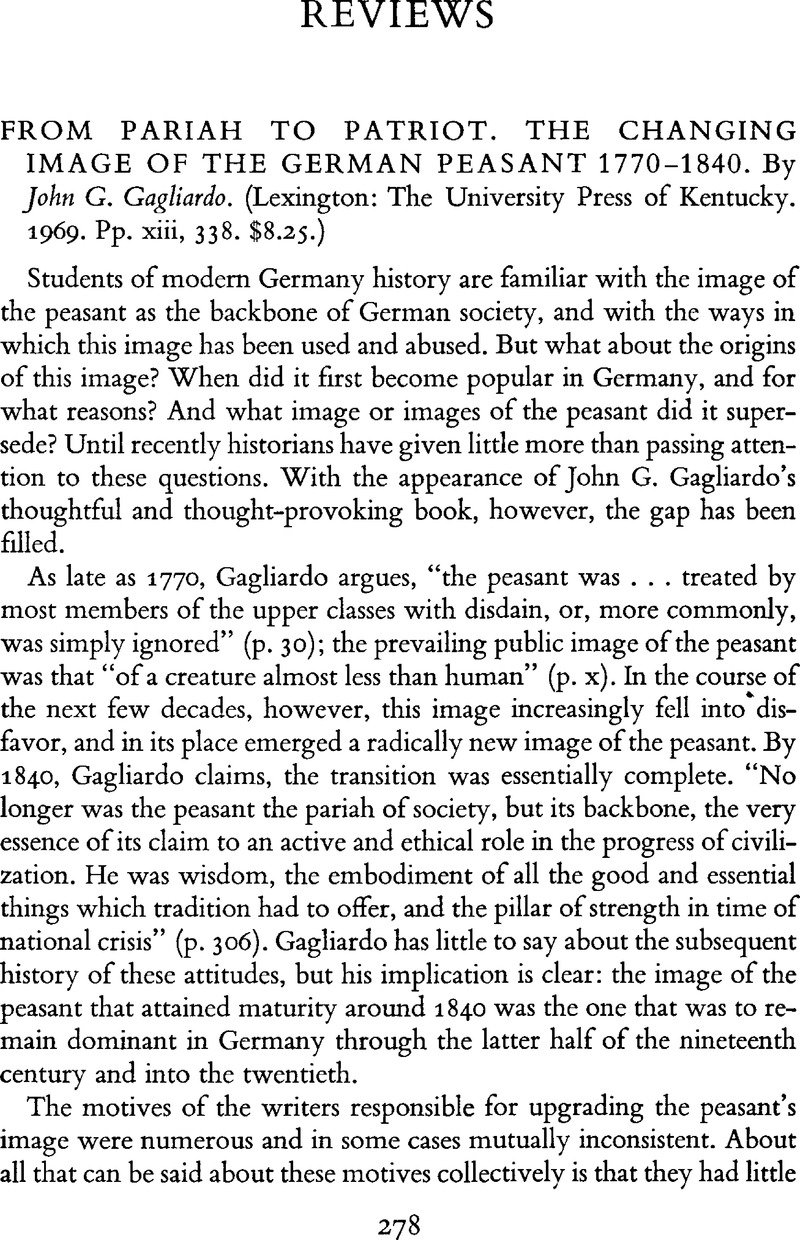No CrossRef data available.
Article contents
FROM PARIAH TO PATRIOT. THE CHANGING IMAGE OF THE GERMAN PEASANT 1770–1840. By John G. Gagliardo. (Lexington: The University Press of Kentucky. 1969. Pp. xiii, 338. $8.25.)
Published online by Cambridge University Press: 16 December 2008
Abstract

- Type
- Reviews
- Information
- Copyright
- Copyright © Conference Group for Central European History of the American Historical Association 1973
References
1. In this connection, see Droz, Jacques and Ayçoberry, Pierre, “Structures sociales et courants idéologiques dans l'Allemagne prérévolutionnaire, 1835–1847,” Annali (Istituto Giangiacomo Feltrinelli, Milan), VI (1963), 196.Google Scholar
2. Moore, Barrington Jr., Social Origins of Dictatorship and Democracy: Lord and Peasant in the Making of the Modern World (Boston, 1966), pp. 490–91.Google Scholar
3. Ibid., pp. 491–92. It should be noted, too, that many scholars define populism in terms relevant to Gagliardo's theme; see, for instance, Populism: Its Meaning and National Characteristics, ed. lonescu, Ghita and Gellner, Ernest (London, [1969]), passim.Google Scholar
4. On the links between anti-Semitism and the idealization of the peasant in these and other later movements, see Bergmann, Klaus, Agrarromantik und Grossstadtfeindschaft, Marburger Abhandlungen zur Politischen Wissenschaft, xx (Meisenheim am Glan, 1970), passim;Google Scholar and Mosse, George L., The Crisis of German Ideology: Intellectual Origins of the Third Reich (New York, 1964), passim.Google Scholar
5. See Walker, Mack, Germany and the Emigration, 1816–1885 (Cambridge, Mass., 1964), pp. 60–69 and 104–29.Google Scholar


